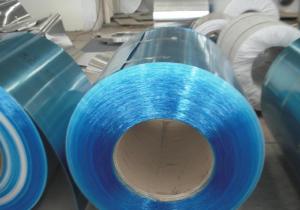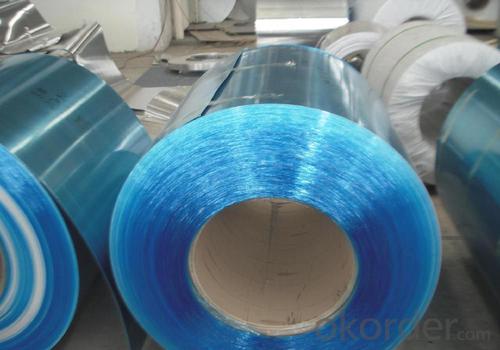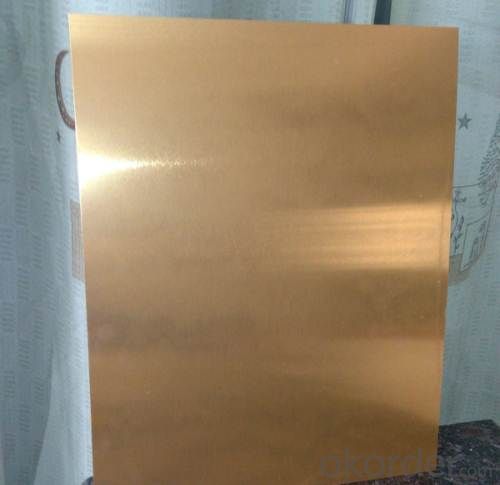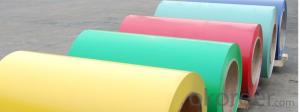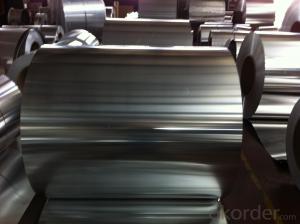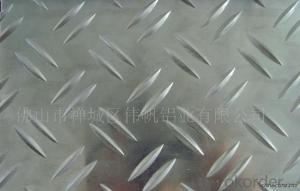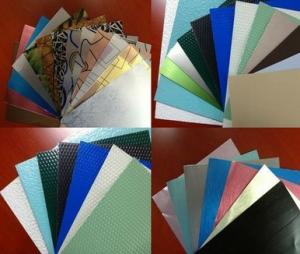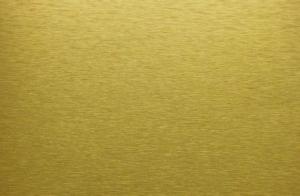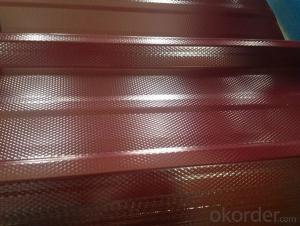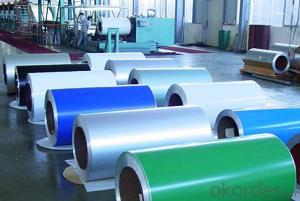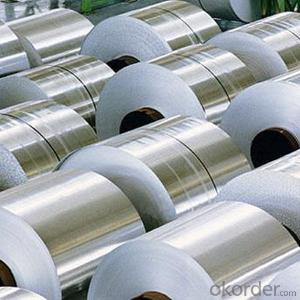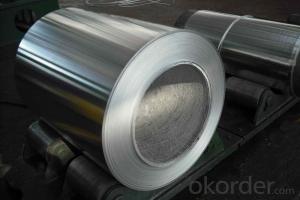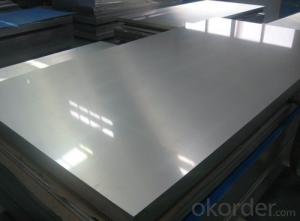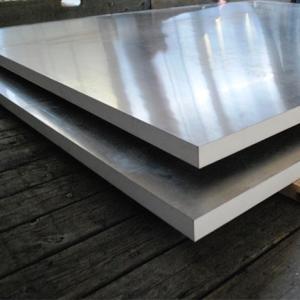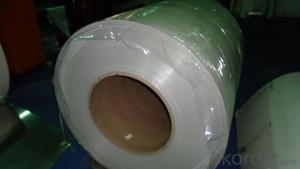Brown Anodized Aluminum Sheets - 1100 3003 3105 Color Coated Aluminum Sheet and Colored Aluminum Coil for Decoration
- Loading Port:
- Shanghai
- Payment Terms:
- TT or LC
- Min Order Qty:
- 5 m²
- Supply Capability:
- 9000 m²/month
OKorder Service Pledge
OKorder Financial Service
You Might Also Like
Aluminum alloy wallboard standard:
PCM is the technique of the printing pre-coating (roll coating) no color difference.
The specification of the wall board: | Max Width 1700mm |
Aluminum alloy sheet: | Base on AA1100, AA3003, AA3004, AA3105, AA5052, AA5754, 1.0-4.0mm thick aluminum alloy panels , according to the Chinese National Standard. |
Painting method: | Adopt the most advanced PCM printing , 2 coating and 2 backing, no color difference, extreme flatness technique method. |
Frontispiece painting: | Adopt KYNAR 500 (more than 70% fluorocarbon resin) |
Frontispiece guarantee: | Coating guarantee for 20 years. |
Film of Face protecting: | Adopt PVC film, standard thickness is 80 μ |
Color requirements: | Color according to the color board or color number of the client’s order. |
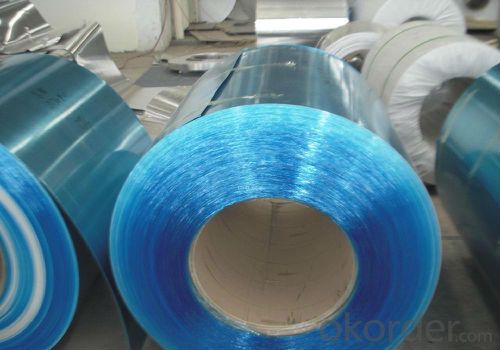
As a credible manufacturer in this field, we guarantee a best quality & short delivery with a long timed experience and technical know-how and wish your company to have a chance to meet a world best-raw material partner!
Our product's details are as following and we need to know some info from you, in order to give you the best price.
1. Your wanted Alloy, Thickness and Size of aluminum sheet
2. Your main use of our aluminum sheet
3. Approximate needed quantity
4. RAL color number ,thickness of the painting film both surface
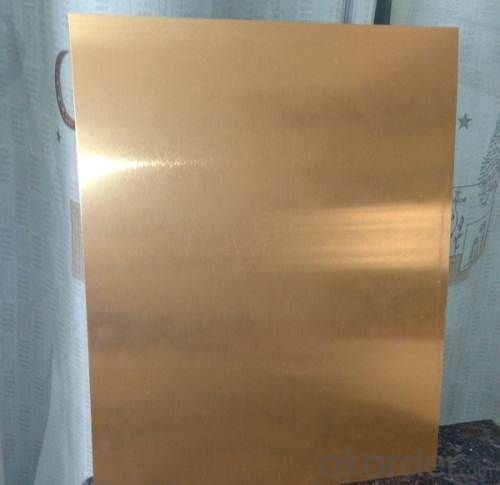
Packaging Details:
1). Each coil to be securely tied with two bands.
2). the contact points of these bands on the coil edge to be protect with edge protectors.
3). Coil then to be properly wrapped with plastic film ,woven belt, resistant paper.
4). Wooden or iron pallet can be used or as your requirements.
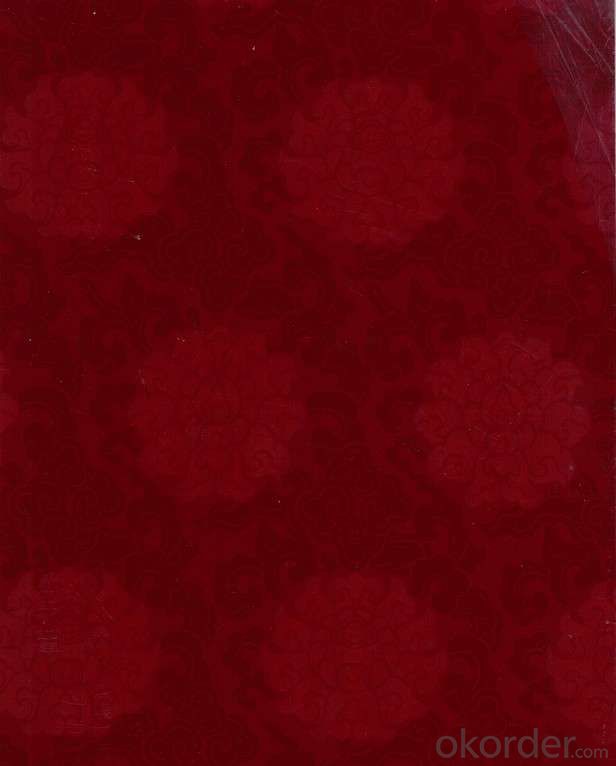
- Q: Is the value of specific heat capacity of aluminium higher or lower than the standard value? Why?
- This is not my expertise. As I have been researching this the past hour to re-educate myself, no one else has answered you. So, I will attempt to get you in the right direction by what I found. I found two specific heat values for Aluminum. The recent one is from wikipedia with the other an old text someone quoted. The specific heat of aluminum, cAl, is 0.897J g?1 K?1; this is, 0.214cal g?1 °C?1. [per wikipedia] AND The specific heat capacity of aluminum as 0.215 kcal/(kg C) [The Handbook of Chemistry and Physics, p. D-217, 1979]. Standard Value was the harder item. I found it is referred to as Hro [Where the o is a circle]. I could only find it referring to water. To measure heat for each metal, it was always compared to the heating water, which is used as the standard. I'm guessing its like a thermometer filled with mercury. The mercury gets heated and the lines are marked to tell you how hot the air is. Hope that helps... Maybe someone else will jump in...
- Q: i've been looking at stove top espresso coffee makers and they are all made of either aluminum or stainless steel. so i wonder is one metal any better than the other as far as coffee makers go? i thought before i actually buy one i'd like to hear from you - do you have a stove top espresso maker? what metal is it and what do you think of it? looking forward to reading your thoughts - thanks everyone!cheers!
- It's actually a lot better
- Q: Can aluminum sheets be used for electrical busbars?
- Indeed, electrical busbars can utilize aluminum sheets. Aluminum possesses exceptional electrical and thermal conductivity attributes, making it an ideal material. Moreover, it boasts advantages such as being lightweight and cost-effective in comparison to copper and similar metals. Nevertheless, employing aluminum sheets for busbars necessitates certain considerations. Due to aluminum's higher resistance in comparison to copper, larger cross-sectional areas may be necessary to compensate for this discrepancy. Furthermore, it is vital to implement proper insulation and joint connections to prevent potential galvanic corrosion issues between the aluminum busbars and other metals within the electrical system. In summary, aluminum sheets can serve as a suitable choice for electrical busbars, but careful evaluation of the specific application requirements and design considerations is essential to ensure optimal performance and safety.
- Q: This question asks for a list of adhesive types that are suitable for bonding aluminum sheets. It is important to provide a variety of options to give a comprehensive answer.
- <p>There are several types of adhesives used for bonding aluminum sheets together, including epoxy resins, which offer strong adhesion and resistance to heat and chemicals; polyurethane adhesives, known for their flexibility and durability; acrylic adhesives, which provide good adhesion and are easy to use; cyanoacrylates or 'super glues,' which bond quickly and are great for small, precise applications; and silicone adhesives, which are excellent for high-temperature applications and offer flexibility. Each type has its own advantages and is chosen based on the specific requirements of the bonding task, such as strength, flexibility, and resistance to environmental factors.</p>
- Q: why does 10% sulfuric acid not react with aluminum sheet?
- 10% sulfuric acid has a high concentration and will be passivated and formulate a layer of oxide film after reacting with aluminum,and the reaction will stop after seperating sulfuric acid and aluminum. there is a layer of Al2O3 oxide film on the surface of aluminum, so it's hard for sulfuric acid to break the oxide film and react with aluminum.
- Q: What types of aluminum sheets are recommended for outdoor use due to their properties?
- <p>Yes, there are specific types of aluminum sheets designed for exterior applications. These include aluminum sheets with protective coatings such as anodized aluminum, which offers enhanced resistance to corrosion and weathering. Additionally, aluminum sheets with a PVDF (Polyvinylidene Fluoride) coating, such as Kynar 500, are highly suitable for exterior use due to their excellent durability and resistance to UV rays, chemicals, and scratches. These coatings help maintain the aluminum's appearance and integrity over time, making them ideal for outdoor applications where exposure to the elements is a concern.</p>
- Q: What are the advantages of utilizing aluminum sheets in construction projects in terms of environmental impact?
- <p>Using aluminum sheets in construction offers several environmental benefits. They are highly recyclable, which reduces waste and conserves natural resources. Aluminum is lightweight, reducing the carbon footprint associated with transportation. It also has a high strength-to-weight ratio, leading to less material usage and lower energy consumption in production. Additionally, aluminum's reflective properties can help in reducing heat absorption, contributing to energy efficiency in buildings. Moreover, aluminum production technology has advanced to minimize harmful emissions, making it a more sustainable choice for construction materials.</p>
- Q: How are aluminum sheets manufactured?
- Rolling is the process by which aluminum sheets are made. It begins with aluminum ingots that are heated and then passed through rolling mills. These mills, made of steel, have rotating rollers that squeeze and stretch the aluminum as it passes between them. This continuous rolling process refines the grain structure of the aluminum and improves its mechanical properties. To ensure the desired thickness and surface finish, the aluminum sheets may go through multiple passes in the rolling mills. Each pass gradually reduces the sheet's thickness until the desired thickness is reached. The final pass also gives the sheet its desired surface finish. After rolling, the aluminum sheets may undergo additional treatments like annealing or surface treatments. Annealing involves heating the sheets to a specific temperature and slowly cooling them to improve their strength and relieve internal stresses. Once manufactured and treated, the aluminum sheets are typically cut into desired sizes and shapes. This can be done through shearing with sharp blades or using specialized cutting machines. In summary, the manufacturing of aluminum sheets is a precise and intricate process that involves heating, rolling, treating, and cutting the aluminum to achieve the desired thickness, finish, and properties.
- Q: Are aluminum sheets suitable for heat exchangers?
- Yes, aluminum sheets are suitable for heat exchangers. Aluminum is a lightweight and highly conductive material that allows for efficient heat transfer, making it ideal for heat exchanger applications. Its corrosion resistance also ensures the longevity and durability of the heat exchanger in diverse operating conditions.
- Q: what were the cinergy field (riverfront stadium, cincinnati, oh) seats made of? were they metal or aluminum? i know they were silver under the red paint...
- The stadium opened in 1970, so that would be aluminum.
Send your message to us
Brown Anodized Aluminum Sheets - 1100 3003 3105 Color Coated Aluminum Sheet and Colored Aluminum Coil for Decoration
- Loading Port:
- Shanghai
- Payment Terms:
- TT or LC
- Min Order Qty:
- 5 m²
- Supply Capability:
- 9000 m²/month
OKorder Service Pledge
OKorder Financial Service
Similar products
Hot products
Hot Searches
Related keywords
